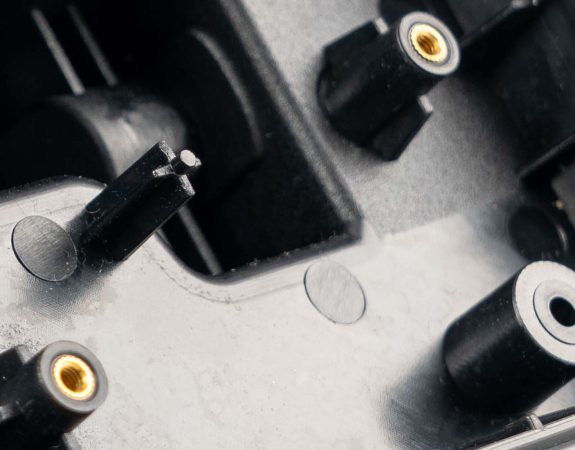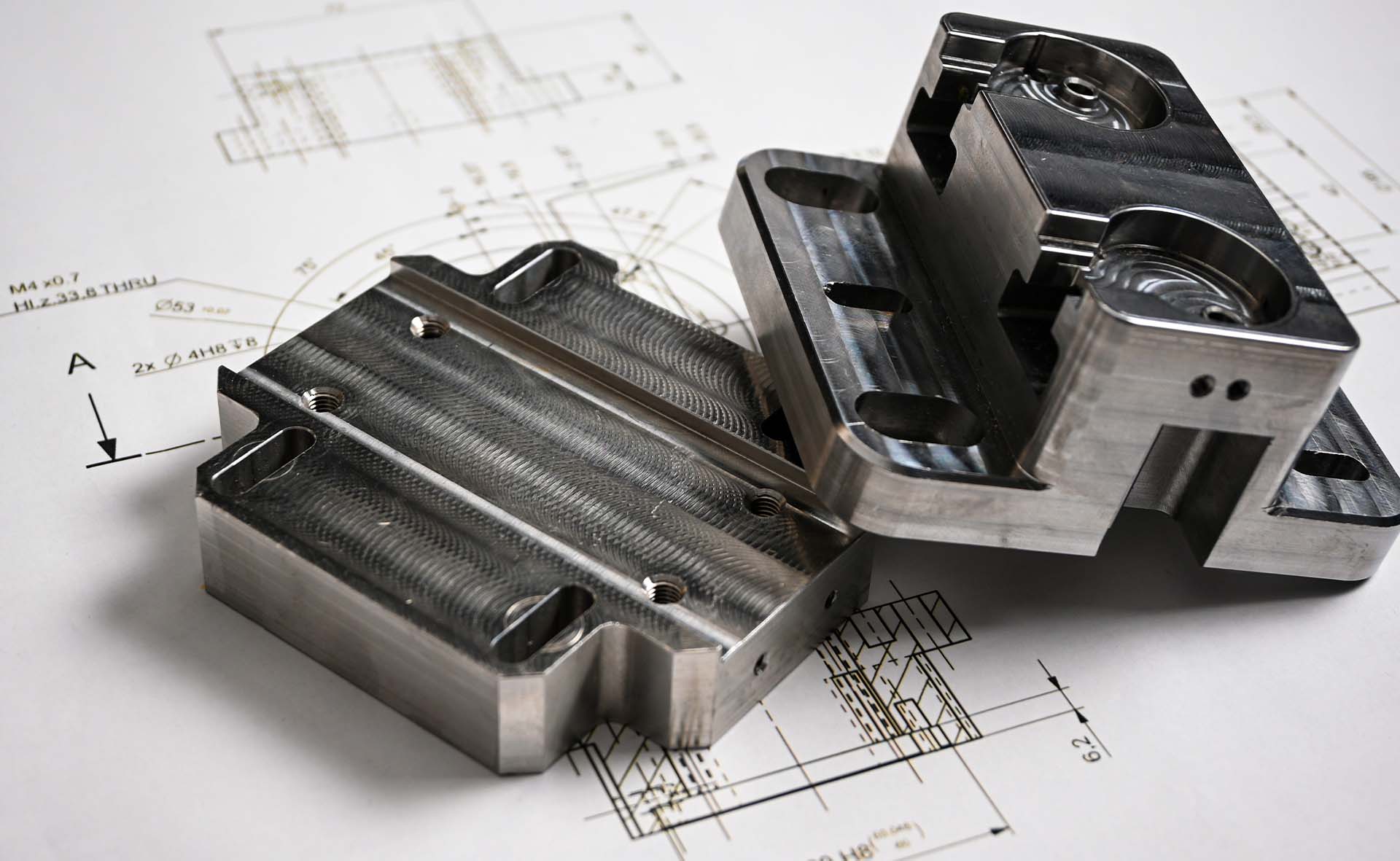Draft angles are a required feature for most custom injection moulded parts and should be one of your top design priorities. Without sufficient draft (taper), parts cannot be cleanly released from the mould which can (and will) affect the part’s form, fit, and functionality. In the worst-case scenario, it can even damage the mould, which can cost tens of thousands of dollars to repair. For successful injection molding, ensure your designs include draft angles—and sufficient ones at that.
In this article, we will explain what a draft angle is and best draft angle design practices and to create an efficient, high-quality production process that prevents unnecessary setbacks.
A draft angle is a taper applied to the vertical walls of an injection-moulded component, with the main purpose of facilitating the easy release of the part from the mould. It’s measured in degrees and minimizes friction as well as promotes smoother ejection of parts, faster cycles, less waste and lower costs.

Parts with vertical walls (and no draft angle) are most prone to drag marks. Typically, designers apply draft angles of 1½ to 2 degrees to injection moulded parts at mould depths up to 2 inches. At HLH, we recommend applying a draft angle of 2 degrees or more to be on the safe side.

This means that the draft angle should follow the direction of the mould moving up or away as it separates. If you imagine a hollow box with drafted walls, the open top would be slightly wider than the bottom when draft is applied correctly.
For deeper or larger parts, more draft is required to account for the additional surface area (and to counter friction and vacuum upon mould release). A good rule of thumb is to add at least 1° for every 25 mm (1 inch) of cavity depth. So, for a feature that is 75mm tall, you should add a minimum draft of 3 degrees.
If your part has a textured surface finish, it will be harder to eject from the mould due to increased friction. Therefore, parts with textured surfaces require an additional draft to improve mould release. As a rule of thumb, add 1° to 2° extra to the results calculated in the previous section.
* General injection moulding draft angle guidelines based on surface finish and texture:
| Surface Finish | Recommended Draft |
|---|---|
| Smooth Finish | 1 to 2 degrees (typical) |
| Light Texture | 3 degrees |
| Heavy Texture | 5 degrees or more |
A material’s characteristics will also influence the amount of draft required. The more a material shrinks when cooling, the more it grips onto the mould, therefore requiring a greater draft. For example, materials like PP and PC, which shrink more, require greater draft to ease part ejection. Conversely, for softer and more flexible materials like nylon, you can use a smaller draft angle.
* General draft angle guidelines for some commonly used injection moulding materials:
| Material | Minimum Draft | Recommended Draft |
| Nylon (PA) | 0° | 1° |
| Polyethylene (PE) | 0.5° | 1.5° |
| Polyvinyl Chloride (PVC) | 0.5° | 1.5° |
| Polypropylene (PP) | 1° | 2° |
| Polycarbonate (PC) | 1.5° | 2° |
For complex geometries or parts with several tension-easing features like ribs, gussets or louvers (all integral components of good part design), ideally, every area of contact with the mould should incorporate a draft angle.
* General injection moulding draft angle guidelines for different features:
| Rib Draft | 0.5 degrees or greater |
|---|---|
| Boss Internal Diameter Draft | 0.25 degrees or greater |
| Boss Outer Diameter Draft | 0.5 degrees or greater |
If the parting line for a molded part is in the middle (as with, for instance, a solid cylindrical part), draft should be incorporated on both ends of the part. This is because, rather than one mold release action, there are effectively two—each of which requires a draft angle to facilitate proper ejection.

When design requirements dictate a nearly uniform angle from top to bottom of a part wall or vertical surface, a minimum ½ degrees (half a degree) of draft should be incorporated into all vertical surfaces. And in rare and extreme cases that require perfectly straight—remember any draft is better than no draft.
A draft angle is not a “nice-to-have” feature of design to manufacture; it is essential for successful part production. While engineers and designers might prefer straight, perpendicular models for simplicity, the absence of draft can (and likely will) lead to an unacceptable number of rejected parts, resulting in costly and unrecoverable losses. Therefore, it’s crucial to get it right. Even if you can get away with less draft, it’s always better to opt for more.

Get a FREE quote within 48 hours or less
Draft angles may not be your favourite feature to design, but it’s worth the hassle. Designing them correctly is key to obtaining a competitive cost and potentially shortening the lead time. Here are a few advanced tips highlighted by our engineers for designing successful draft angles:
Integrate Draft Into Your Design Early: For the best, most cost-effective results, think about draft early in the design process. If you are 3D printing a prototype, make sure it already contains the draft to avoid having to repeat your design work.
Leverage (free) DFM Analysis: At HLH, our engineering team provides a free comprehensive DFM for projects you can optimize your tooling designs before moving ahead with production. Simply send your CAD and project details to get a quote for your injection moulding project.
Discover more design guides to optimise your design for injection moulding:
How to Design Ribs for Injection Moulding
Injection Moulding Defects and Solutions
Choosing a Gate Type for Injection Moulding
